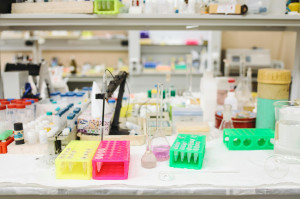The History and Development of Psilocybin Research

Table of Contents
- Introduction
- Synthesis of Psilocybin and Related Compounds
- 2.1. Early Chemical Developments
- 2.2. Sandoz’s Marketing of Psilocybin
- The Harvard Psilocybin Project
- 3.1. Timothy Leary and Colleagues
- 3.2. Key Experiments: Concord Prison Experiment
- 3.3. Controversy and Termination
- Legal Restrictions and Decline of Psychedelic Research
- 4.1. U.S. Legal Actions in the 1960s
- 4.2. Impact on Sandoz and the Psychedelic Community
- Resurgence of Interest in the 1970s and 1990s
- 5.1. Psilocybin Magic Mushroom Grower’s Guide
- 5.2. Psilocybe Mushrooms & Their Allies
- 5.3. Psychedelic Research in the 1990s
- Recent Developments in Psilocybin Research
- 6.1. Advances in Neuroscience and Brain Imaging
- 6.2. Revival in the United States
- FAQs
1. Introduction
Psilocybin, a naturally occurring psychedelic compound, has had a long and tumultuous history in both clinical research and public perception. Initially discovered in certain mushroom species, it became the focus of significant scientific interest in the mid-20th century, particularly in psychiatry. This article explores the key events and figures that shaped psilocybin's development, its eventual decline due to legal restrictions, and its recent resurgence in modern scientific research.
2. Synthesis of Psilocybin and Related Compounds
2.1. Early Chemical Developments
After psilocybin was first isolated from psychedelic mushrooms, scientists, including those working with Albert Hofmann (the chemist who famously synthesized LSD), began exploring its chemical structure. Hofmann and his team synthesized several compounds chemically related to psilocybin, such as 4-HO-DET and 4-AcO-DMT, to understand how slight structural changes might affect its psychoactive properties.
2.2. Sandoz’s Marketing of Psilocybin
The Swiss pharmaceutical company Sandoz played a pivotal role in making pure psilocybin available for clinical use. Marketed under the trade name Indocybin, the drug was distributed to researchers and clinicians globally. During this time, there were no serious reports of complications from its use, which highlighted its potential in psychiatric treatment. However, this early period of research would soon face challenges as public perception shifted.
3. The Harvard Psilocybin Project
3.1. Timothy Leary and Colleagues
In the early 1960s, Harvard University became a major hub for psilocybin research, thanks to psychologist Timothy Leary and his collaborators, Ralph Metzner and Richard Alpert (later known as Ram Dass). This group initiated the Harvard Psilocybin Project, which aimed to explore the psychological effects of the drug on human consciousness. Leary obtained synthetic psilocybin for his studies from Albert Hofmann through Sandoz.
3.2. Key Experiments: Concord Prison Experiment
One of the notable studies conducted under the Harvard Psilocybin Project was the Concord Prison Experiment, which sought to evaluate psilocybin’s potential in reducing recidivism rates among inmates. Although the results were promising, suggesting a potential use for psilocybin in clinical psychiatry, the project's controversial nature brought scrutiny.
3.3. Controversy and Termination
Leary and Alpert’s strong advocacy for the widespread use of hallucinogens stirred significant controversy. Their open promotion of psychedelic substances eventually led to their highly publicized dismissal from Harvard. This event contributed to growing public concern over the recreational use of these substances and helped ignite a broader backlash against psychedelics in the 1960s.
4. Legal Restrictions and Decline of Psychedelic Research
4.1. U.S. Legal Actions in the 1960s
In response to the rise in unsanctioned use of psychedelics like psilocybin, the United States passed stringent laws in 1966, banning the production, sale, and consumption of hallucinogenic substances. These laws severely limited access to psilocybin, marking the beginning of a long period of legal repression for psychedelic research.
4.2. Impact on Sandoz and the Psychedelic Community
Following these legal changes, Sandoz halted the production of both LSD and psilocybin in the same year. In 1970, psilocybin, alongside LSD, was classified as a Schedule I drug under U.S. law, indicating it was considered to have no accepted medical use and a high potential for abuse. These restrictions stifled research funding, forcing many scientists studying psychedelics to abandon their work for fear of professional marginalization.
5. Resurgence of Interest in the 1970s and 1990s
5.1. Psilocybin Magic Mushroom Grower’s Guide
Despite the legal challenges, the countercultural interest in psilocybin persisted. In 1976, Terence McKenna and his brother released the book Psilocybin Magic Mushroom Grower’s Guide, providing instructions on how to cultivate psilocybin mushrooms. This contributed to the spread of home cultivation during a time when psychedelics were under heavy legal scrutiny.
5.2. Psilocybe Mushrooms & Their Allies
In 1978, mycologist Paul Stamets published Psilocybe Mushrooms & Their Allies, further enhancing the understanding and identification of psychedelic mushrooms. Stamets would go on to become a major figure in the world of mycology and psychedelics.
5.3. Psychedelic Research in the 1990s
In the 1990s, research into psychedelics slowly began to regain momentum, particularly in Europe. Advances in neuroscience, combined with new brain imaging techniques, offered scientists a way to study how substances like psilocybin could provide insights into the neural basis of psychotic symptoms, including ego disorders and hallucinations. This marked the beginning of a renewed interest in the therapeutic potential of psychedelics.
6. Recent Developments in Psilocybin Research
6.1. Advances in Neuroscience and Brain Imaging
In recent years, significant advances in neuroscience have allowed for deeper investigation into how psychedelics, including psilocybin, affect the brain. Researchers are now able to observe how these substances interact with serotonin receptors and alter brain activity, shedding light on their potential use in treating conditions like depression, anxiety, and PTSD.
6.2. Revival in the United States
In the United States, recent studies have attracted widespread attention and brought psilocybin back into mainstream conversations. This renewed focus on psychedelic-assisted therapy has been covered extensively in popular media, contributing to a new wave of interest in psilocybin research. Today, psilocybin is being reconsidered for its potential to treat a variety of mental health disorders, with some states even moving towards decriminalization or legalization for medical purposes.

